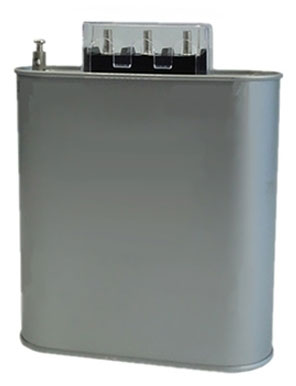Capacitor Troubleshooting
As a reactive power compensation device, the capacitor is an important equipment for the safe operation of the power grid. It plays an important role in adjusting the voltage of the power grid, reducing line losses, and improving the quality of power supply. But in actual application, due to the influence of human factors and various aspects of the environment. The capacitor frequently fails during operation, which affects normal operation. The following is an analysis of related failures about capacitance.
- Common failures of capacitors. When one of the following conditions of the capacitor is found, the power supply should be cut off immediately.
- The capacitor shell expands or leaks oil.
- The casing is ruptured; flashover and sparks occur.
- The internal sound of the capacitor is abnormal.
- If the temperature of the shell is higher than 55℃, it means that the temperature chip is off.

- Troubleshooting of capacitor
- When the capacitor explodes and catches fire, immediately disconnect the power supply and use sand and a dry fire extinguisher to extinguish the fire.
- When the fuse of the capacitor is blown, it should be reported to the dispatcher, and the circuit breaker of the capacitor should be opened after obtaining the consent. Cut off the power supply to discharge it, and perform an external inspection first, such as whether there are flashover marks on the outside of the casing, whether the casing is deformed, whether there is oil leakage, and whether there is a short circuit in the grounding device, etc, and measure the insulation resistance value to check whether the capacitor bank wiring is complete, it is firm, and whether there is a lack of phase phenomenon. If no malfunction is found, it can be put into operation after changing the insurance. If the fuse is still blown after the power is supplied, the faulty capacitor should be withdrawn and the Power supply to the remaining parts should be restored. If the circuit breaker trips at the same time as the fuse is blown, do not force it. After the above inspection is completed, the insurance is replaced before the investment.
- The circuit breaker of the capacitor has tripped and the shunt fuse is not broken. The capacitor should be discharged for three minutes before checking the circuit breaker, current transformer, power cable and the outside of the capacitor. If no abnormality is found, it may be caused by external fault bus voltage fluctuations. After inspection, it can be tested; otherwise, a full power-on test of the protection should be carried out. Through the above inspections and tests, if the cause is still not found, it is necessary to act according to the system and gradually test the capacitors. No trial investment is allowed until the reason is ascertained.
- Safety matters when handling faulty capacitors.
Because the two poles of the capacitor have the characteristics of residual electric charge, we should first try to discharge its electric charge, otherwise electric shock accidents may easily occur. When handling a solve capacitor, first open the circuit breaker of the capacitor bank and its upper and lower isolation switches. If a fuse is used for protection, remove the fuse tube first. At this time, although the capacitor bank has self-discharged through the discharge resistance, there will still be some residual charges, so manual discharge must be performed. When discharging, first fix the grounding end of the grounding wire with the grounding grid, and then use the grounding rod to discharge the capacitor several times until there is no spark or discharge sound, and finally fix the grounding wire. At the same time, it should be noted that if the capacitor has internal disconnection, fuse blown or poor lead contact, there may be residual charges between its two poles, and these residual charges will not be discharged during automatic discharge or manual discharge. Operation or maintenance personnel should wear insulating gloves before touching the faulty capacitor, and short-circuit the two poles of the faulty capacitor with a short-circuit wire to make it discharge. In addition, the capacitors using series connection should also be discharged separately.

